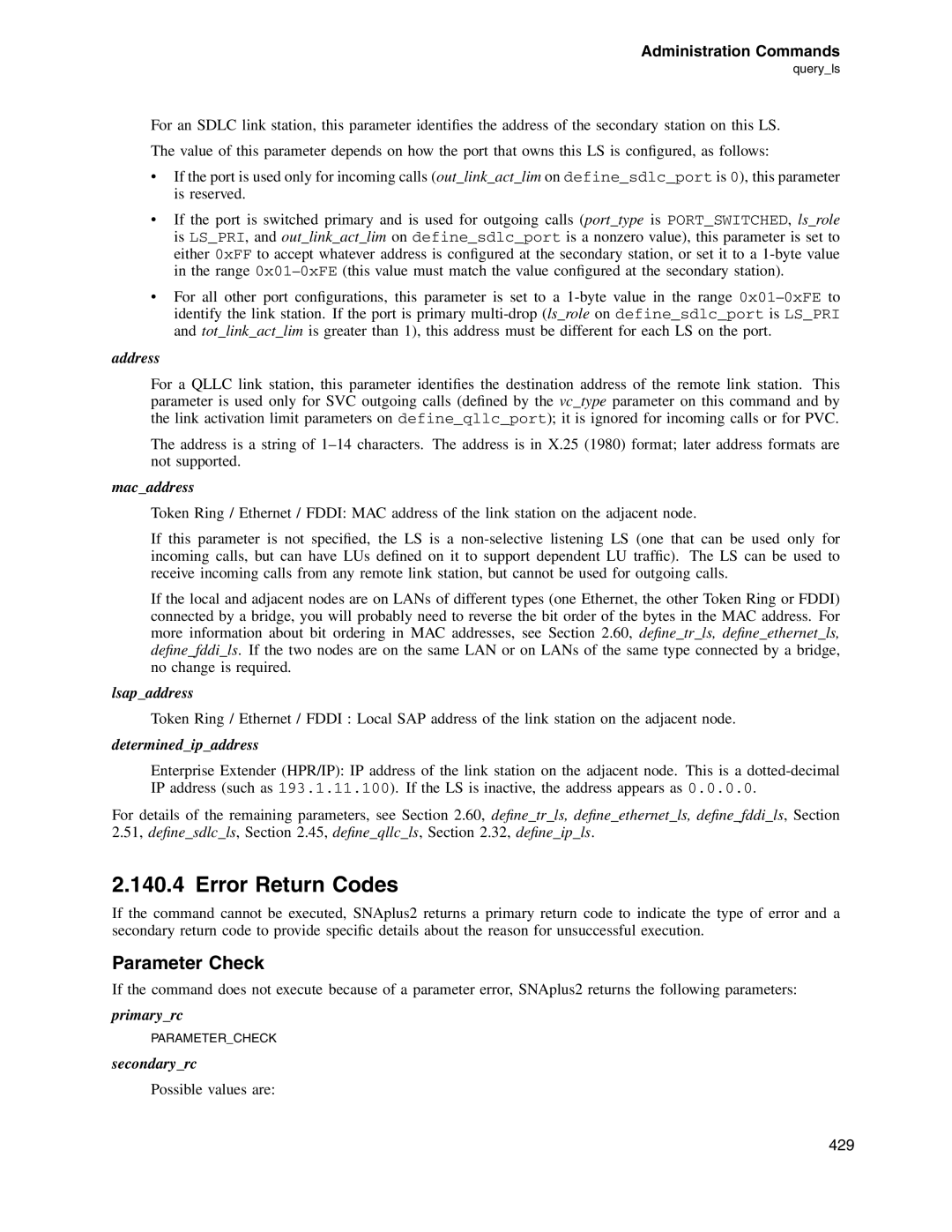Administration Commands
query_ls
For an SDLC link station, this parameter identifies the address of the secondary station on this LS.
The value of this parameter depends on how the port that owns this LS is configured, as follows:
•If the port is used only for incoming calls (out_link_act_lim on define_sdlc_port is 0), this parameter is reserved.
•If the port is switched primary and is used for outgoing calls (port_type is PORT_SWITCHED, ls_role is LS_PRI, and out_link_act_lim on define_sdlc_port is a nonzero value), this parameter is set to either 0xFF to accept whatever address is configured at the secondary station, or set it to a
•For all other port configurations, this parameter is set to a
address
For a QLLC link station, this parameter identifies the destination address of the remote link station. This parameter is used only for SVC outgoing calls (defined by the vc_type parameter on this command and by the link activation limit parameters on define_qllc_port); it is ignored for incoming calls or for PVC.
The address is a string of
mac_address
Token Ring / Ethernet / FDDI: MAC address of the link station on the adjacent node.
If this parameter is not specified, the LS is a
If the local and adjacent nodes are on LANs of different types (one Ethernet, the other Token Ring or FDDI) connected by a bridge, you will probably need to reverse the bit order of the bytes in the MAC address. For more information about bit ordering in MAC addresses, see Section 2.60, define_tr_ls, define_ethernet_ls, define_fddi_ls. If the two nodes are on the same LAN or on LANs of the same type connected by a bridge, no change is required.
lsap_address
Token Ring / Ethernet / FDDI : Local SAP address of the link station on the adjacent node.
determined_ip_address
Enterprise Extender (HPR/IP): IP address of the link station on the adjacent node. This is a
For details of the remaining parameters, see Section 2.60, define_tr_ls, define_ethernet_ls, define_fddi_ls, Section 2.51, define_sdlc_ls, Section 2.45, define_qllc_ls, Section 2.32, define_ip_ls.
2.140.4 Error Return Codes
If the command cannot be executed, SNAplus2 returns a primary return code to indicate the type of error and a secondary return code to provide specific details about the reason for unsuccessful execution.
Parameter Check
If the command does not execute because of a parameter error, SNAplus2 returns the following parameters:
primary_rc
PARAMETER_CHECK
secondary_rc
Possible values are:
429
